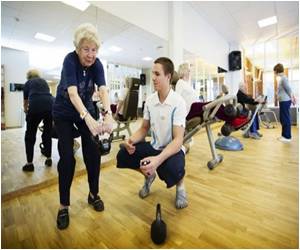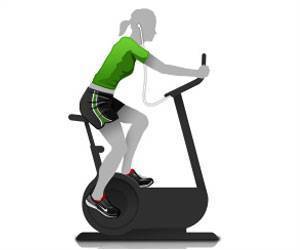Being physically active may significantly improve musculoskeletal and overall health, and also minimize or delay the effects of aging.

It long has been assumed that aging causes an inevitable deterioration of the body and its ability to function, as well as increased rates of related injuries such as sprains, strains and fractures; diseases, such as obesity and diabetes; and osteoarthritis and other bone and joint conditions. However, recent research on senior, elite athletes suggests usage of comprehensive fitness and nutrition routines helps minimize bone and joint health decline and maintain overall physical health.
"An increasing amount of evidence demonstrates that we can modulate age-related decline in the musculoskeletal system," said lead study author and orthopaedic surgeon Bryan G. Vopat, MD. "A lot of the deterioration we see with aging can be attributed to a more sedentary lifestyle instead of aging itself."
The positive effects of physical activity on maintaining bone density, muscle mass, ligament and tendon function, and cartilage volume are keys to optimal physical function and health. In addition, the literature recommends a combined physical activity regimen for all adults encompassing resistance, endurance, flexibility and balance training, "as safely allowable for a given person." Among the recommendations:
Resistance training. Prolonged, intense resistance training can increase muscle strength, lean muscle and bone mass more consistently than aerobic exercise alone. Moderately intense resistance regimens also decrease fat mass. Sustained lower and upper body resistance training bolsters bone density and reduces the risk of strains, sprains and acute fractures.
Endurance training. Sustained and at least moderately intensive aerobic training promotes heart health, increases oxygen consumption, and has been linked to other musculoskeletal benefits, including less accumulation of fat mass, maintenance of muscle strength and cartilage volumes. A minimum of 150 to 300 minutes a week of endurance training, in 10 to 30 minute episodes, for elite senior athletes is recommended. Less vigorous and/or short-duration aerobic regimens may provide limited benefit.
Advertisement
The study also recommends "proper" nutrition for older, active adults to optimize performance. For senior athletes, a daily protein intake of 1.0 to 1.5 g/kg is recommended, as well as carbohydrate consumption of 6 to 8 g/kg (more than 8 g/kg in the days leading up to an endurance event).
Advertisement
Source-Eurekalert















